Track leads from SEO in Fluent Forms
Learn how to use a tool called Attributer to track how many leads you get from your SEO efforts in Fluent Forms.
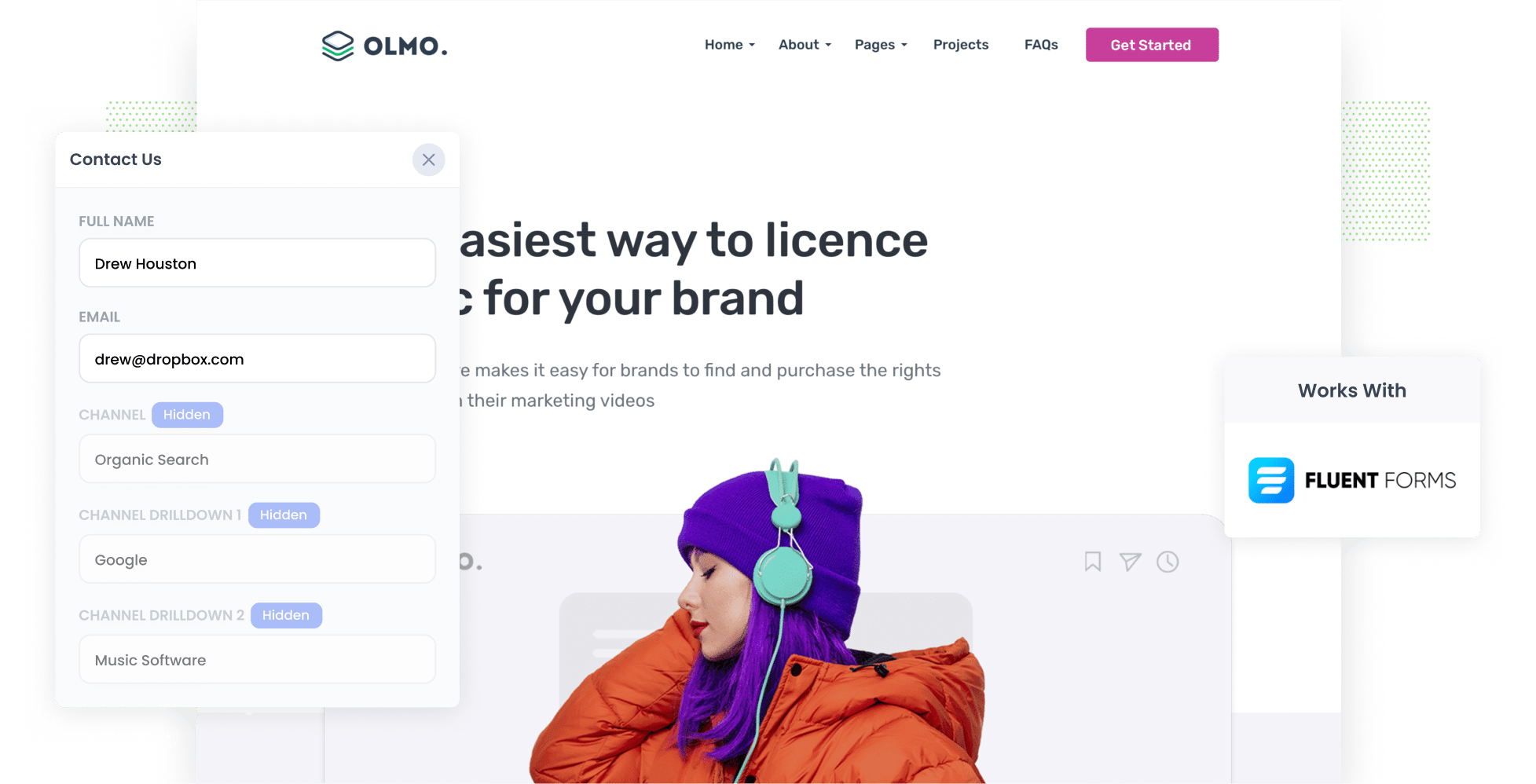
Are you struggling to track how many leads and customers you get from your SEO efforts?
If so, it could be a significant issue for your business. Without knowing how many leads and customers your SEO efforts are generating, you might be wasting valuable time and resources on a channel that simply isn't working for you.
Thankfully, there’s a solution.
In this article, we’ll guide you through how to use a tool called Attributer to capture organic search data with each submission of your Fluent Forms. We’ll also share some example reports you can run to identify how well your SEO efforts are performing.
4 steps to track leads & customers from SEO in Fluent Forms
It’s easy to track how many leads you get from SEO when you use Attributer with Fluent Forms. Here’s how it works:
1. Install Attributer on your website
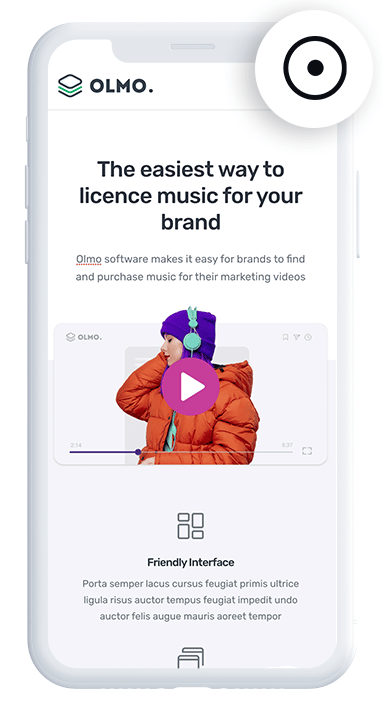
Start by signing up for a 14-day free trial of Attributer, where you’ll get a piece of code to install on your website.
Most website builders allow you to easily add it through the Settings section. However, if you don't have that option, you can use tools like Google Tag Manager.
If you need a helping hand, detailed instructions on how to add the code with popular website builders (such as WordPress, Wix, Webflow, Squarespace, etc.) are available here.
2. Add hidden fields to your forms
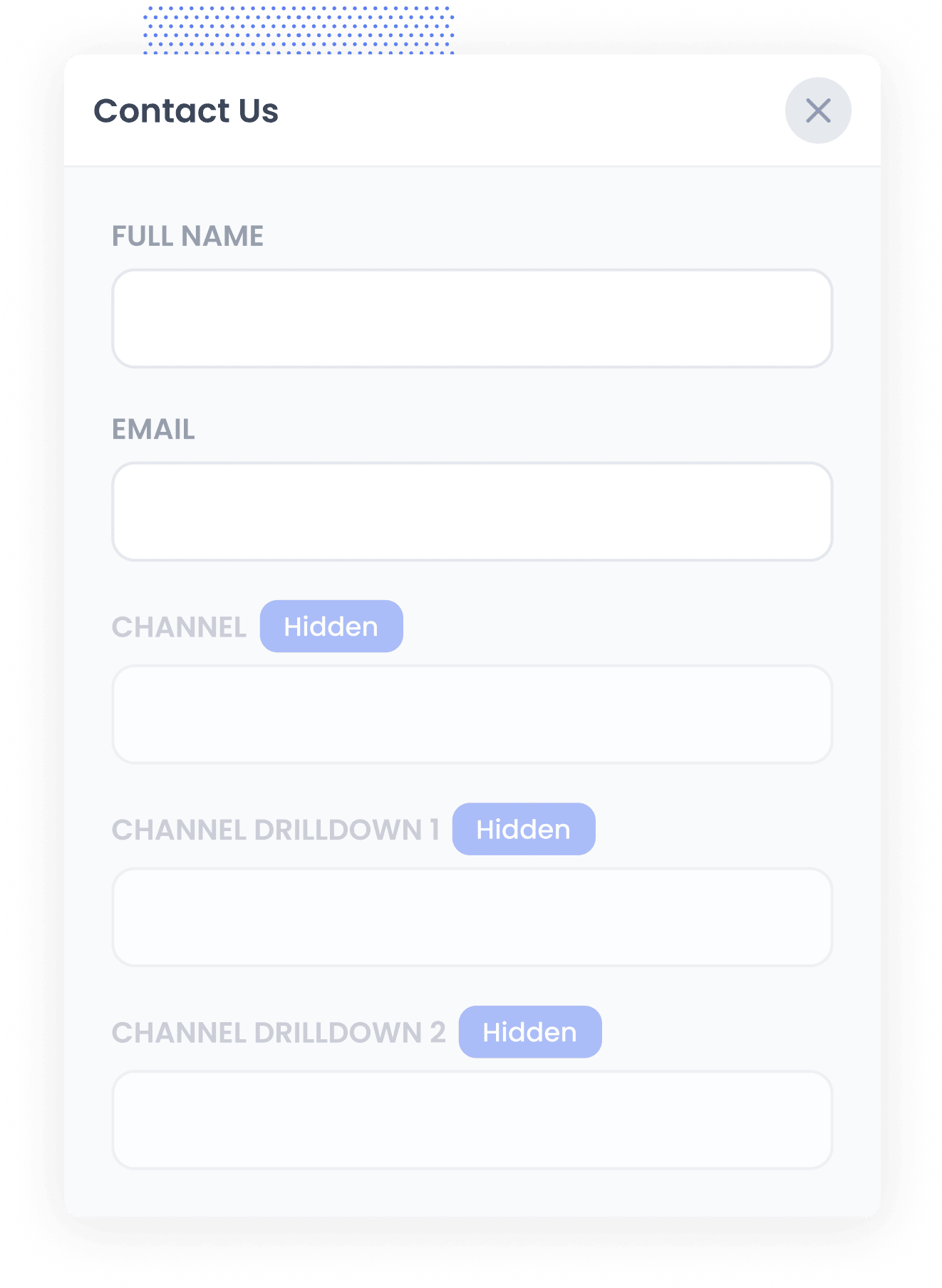
After installing the code on your site, the next step is to add a set of hidden fields to the lead capture forms on your website. These hidden fields include:
- Channel
- Channel Drilldown 1
- Channel Drilldown 2
- Channel Drilldown 3
- Landing Page
- Landing Page Group
Thankfully, Fluent Forms makes this process straightforward. Simply open the desired form, drag and drop six hidden fields into the form, and then configure each with specific labels and default values corresponding to marketing channel data. You can see step-by-step instructions here.
3. Attributer writes SEO data into the hidden fields
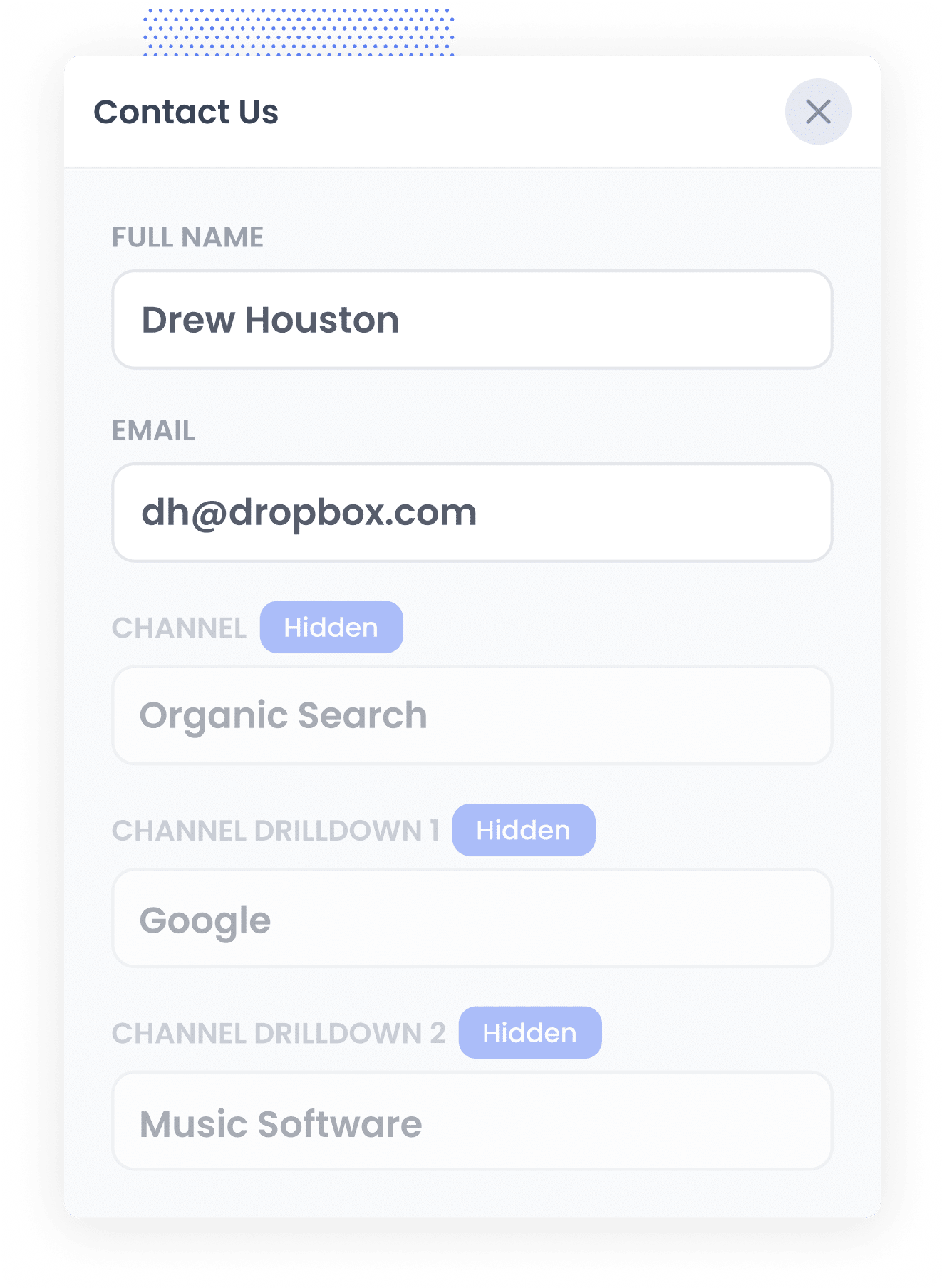
Each time a visitor lands on your site, Attributer looks at various data points (similar to what tools like Google Analytics. look at) to determine where the visitor came from.
It then categorises them into channels (e.g., Organic Search, Paid Search, Paid Social, etc.) before storing this information in their browser.
When the visitor then completes a form (like a 'Contact Us' or 'Request A Quote' form), Attributer populates the hidden fields with data about their source, including the Channel (I.e. Organic Search), the search engine they came from, and keywords used (where available).
4. SEO data is captured with each lead
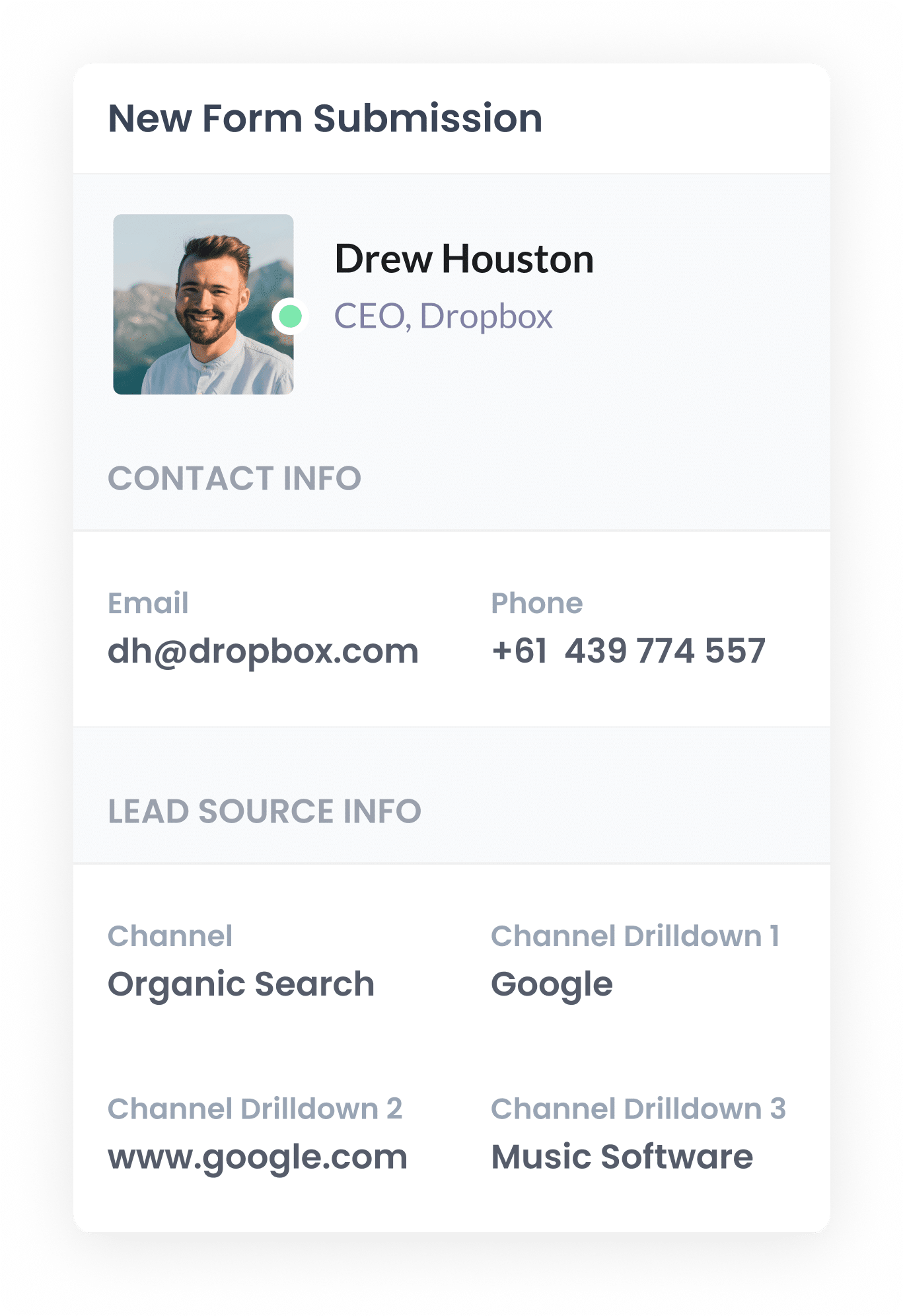
When the visitor submits the form on your website, the organic search data that Attributer wrote into the hidden fields is captured by Fluent Forms (alongside the lead’s name, email, etc).
What data gets captured
Attributer passes through two types of data on your leads: information on how they got to your site (Channel) and what content attracted them there (Landing Page).
So if you were part of the marketing team at an accounting firm and someone came to your site from an organic Google search, the following data would be passed through.
- Channel = Paid Search
- Channel Drilldown 1 = Google
- Channel Drilldown 2 = www.google.com (or the domain they came from, like google.com.au or google.co.uk)
- Channel Drilldown 3: accounting firm in Sydney (or the keyword they searched for, when it’s available)
You would also get information on what page they landed on. Continuing the example above, it might look a bit like this:
- Landing Page = abcaccounting.com.au/blog/sydney-accounting-firms
- Landing Page Group = /blog
This landing page information can help you understand what content on your website is attracting leads from organic search (and, as a result, what content you should create more of).
What you can do with the data
Once the organic search data has been captured by Fluent Forms, there is a lot of different ways it can be used:
- View it in your dashboard – You can access the organic search data alongside each form submission on the 'Entries' page within the Fluent Forms section of your WordPress dashboard.
- Include in email notifications – The organic search data can be included in the new lead notification emails sent by Fluent Forms, so you can view the source of each lead directly in your inbox.
- Integrate with your CRM – You can send the SEO data to CRM platforms such as Salesforce, Pipedrive, Hubspot, and others. This allows you to generate reports that show the number of leads from your SEO efforts, how many converted into customers, the revenue generated, and more.
- Export to a spreadsheet – With Fluent Forms' built-in Google Sheets integration, you can export the data to a spreadsheet. From there, you can create basic graphs that show lead sources, popular content and more. Alternatively, you can connect tools like Google Data Studio to your spreadsheet to create more advanced charts and dashboards.
3 example reports you can run when you capture organic search data in Fluent Forms
During my 15-year career in marketing, I have spent thousands of hours working on SEO and run hundreds of reports to track the impact of our efforts.
I have shared a few reports I have found to be super useful over the years to try and help you out!
1. Leads by Channel
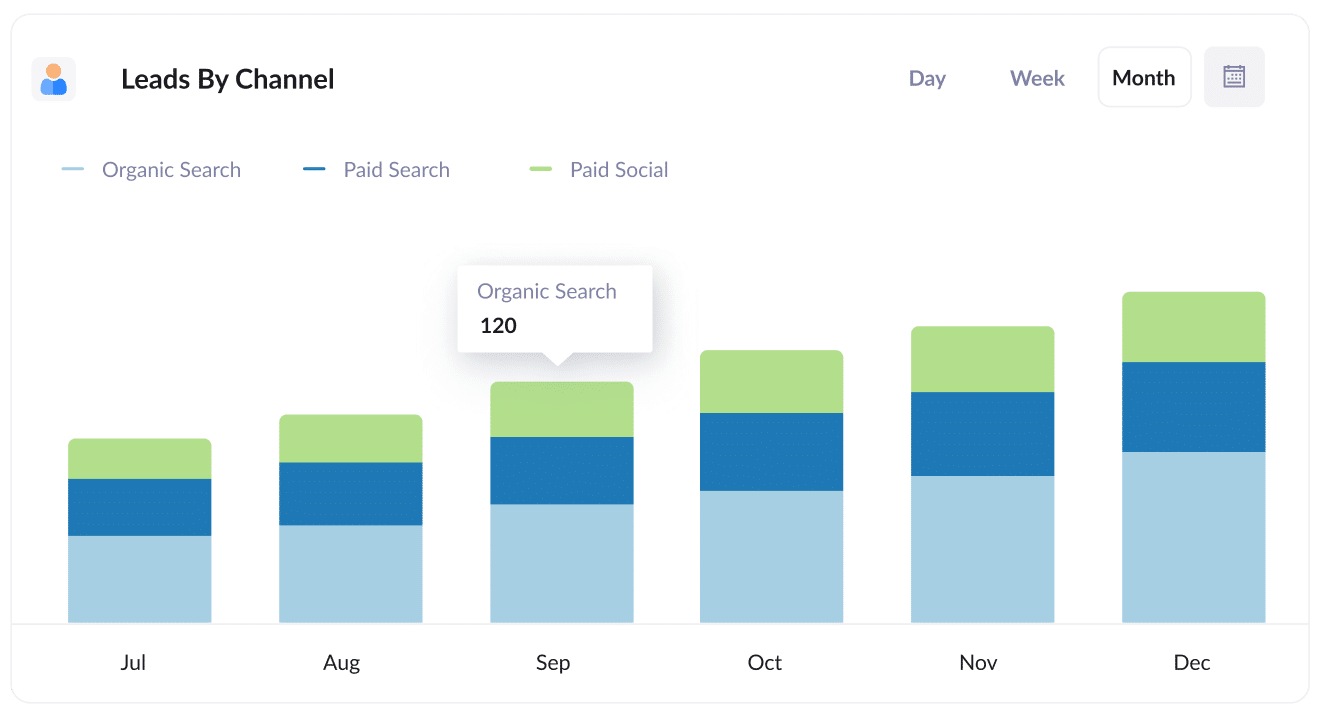
This report shows the number of leads you receive each month, categorised by the channel they came from (such as Organic Search, Paid Search, Paid Social, etc.).
It provides a high-level view of how your SEO efforts are performing and whether they’ve been effective at generating leads for your business.
I also find it useful to compare SEO with other channels. For example, if you're getting more leads from Organic Search than Paid Search, but a large portion of your budget is going towards paid search ads, it could present an opportunity to allocate more budget to SEO to drive business growth.
2. Leads from Organic Search by Landing Page Group
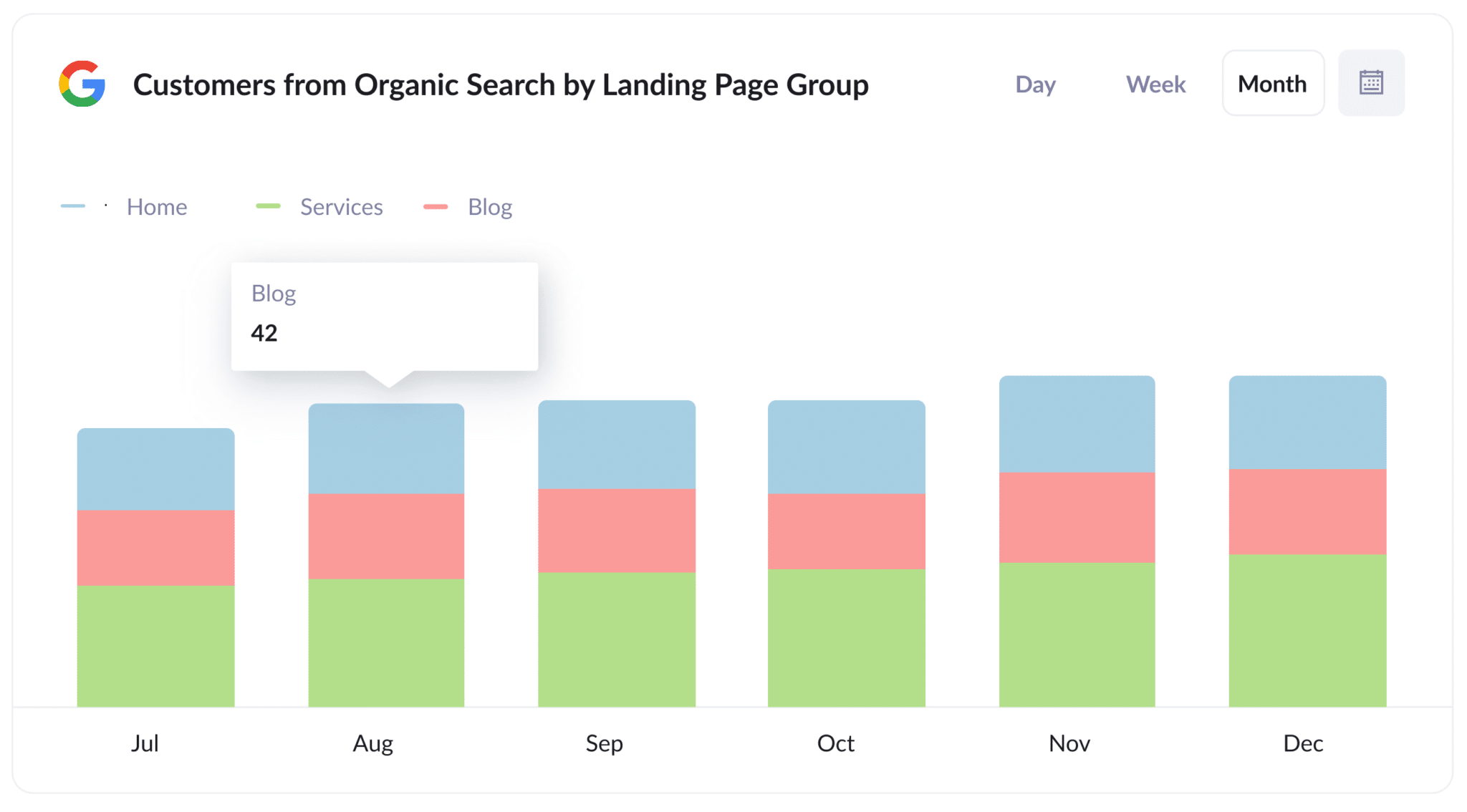
This report shows the number of new leads generated from organic search each month, categorised by landing page group (e.g., Home, Blog, Services, etc.).
It helps you identify which types of content are driving the most customers for your business, providing valuable insights to refine your content and SEO strategy.
3. Leads from Organic Search by Landing Page
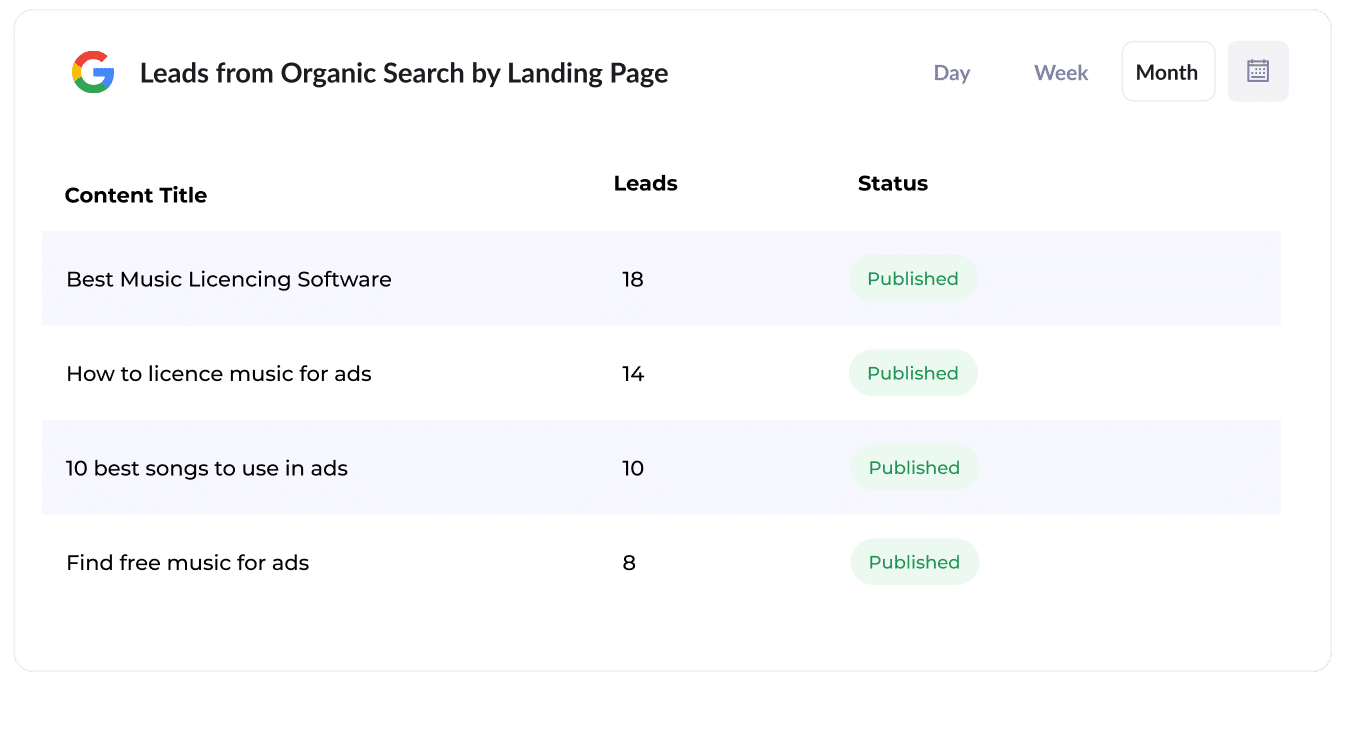
This report is more focused, showing how many leads have been generated from each piece of content on your site (e.g., each blog post).
It makes it easy to see exactly what posts are performing best and helps you make informed decisions about what to create more of.
How Attributer helped Flare HR 4x the number of leads they got from SEO
Flare HR is a Sydney-based provider of HR management software with more than 100 employees and thousands of customers.
As part of their product, they offer a range of customisable HR document templates. These templates, which include employment contracts and internal policy templates, can be customised by their customers and used as their own.
To boost SEO traffic and generate more leads, Flare decided to make these document templates publicly available on their marketing website. They created landing pages for each template, and within just a few months, these pages began attracting tens of thousands of visits from search engines every month.
However, the team faced a challenge: they had no way of knowing if these visitors were turning into leads and customers or simply downloading the templates and leaving.
That's where Attributer came in.
Attributer tracks the source of visitors to the Flare HR website, storing data such as the channel they arrived from (e.g., Organic Search), the specific landing page they visited (e.g., flarehr.com/templates/mobile-phone-policy), and the landing page group (e.g., /templates). If a visitor completes a form, such as the main demo request form on the Flare HR website, this data is passed into their CRM.
Using this information, Flare was able to generate reports that revealed how many leads they were getting from the templates, how many converted into customers, and how much revenue was being generated. They discovered that the template initiative resulted in a 2.4x increase in new leads at a very low cost-per-lead (virtually $0).
Encouraged by the results, Flare expanded the initiative. They doubled the number of templates, optimised the landing pages for better search engine ranking, and ultimately quadrupled the number of leads generated each month.
“Attributer showed us that our SEO efforts were in fact generating customers & revenue and gave us the confidence to double down. We’ve seen a 4x increase in leads as a result”

James Windon - Co-Founder, Flare HR

Wrap Up
If you're looking for an easy way to track how many leads your SEO efforts generate, combining Attributer with Fluent Forms is the way to go.
The best part? Getting started with Attributer is free and the setup typically takes under 10 minutes. Start your 14-day free trial today!
Get Started For Free
Start your 14-day free trial of Attributer today!

About the Author
Aaron Beashel is the founder of Attributer and has over 15 years of experience in marketing & analytics. He is a recognized expert in the subject and has written articles for leading websites such as Hubspot, Zapier, Search Engine Journal, Buffer, Unbounce & more. Learn more about Aaron here.
